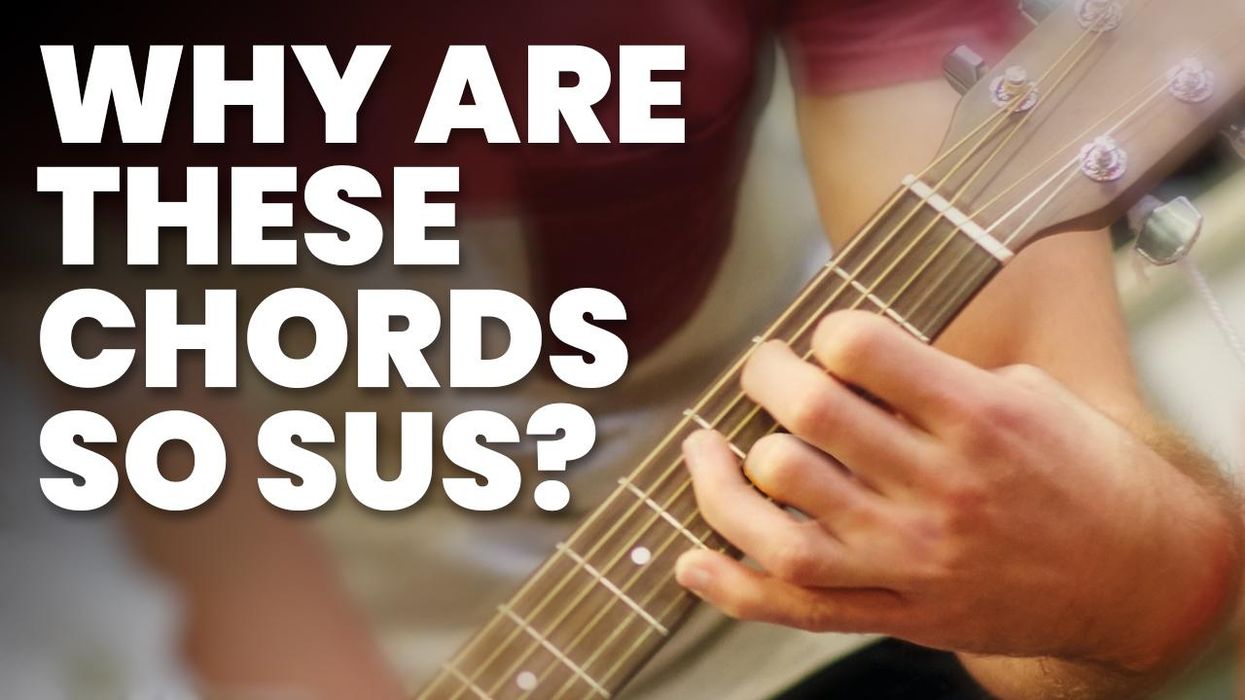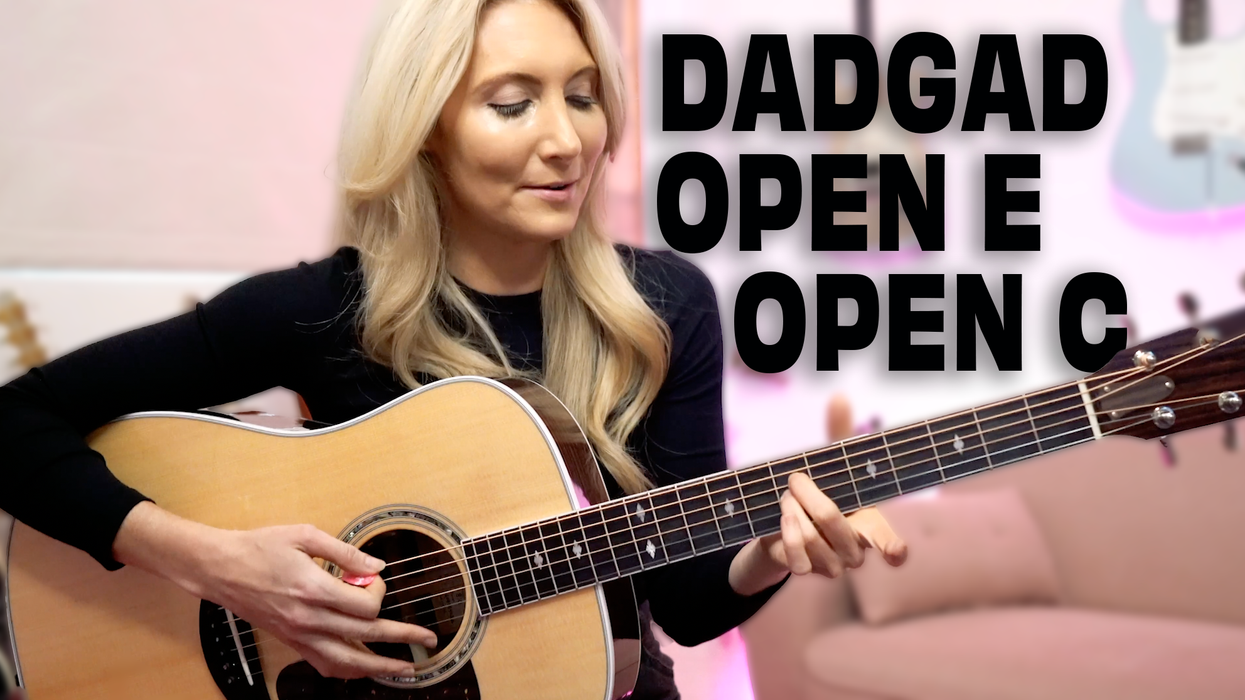Chops: Intermediate
Theory: Beginner
Lesson Overview:
• Understand the basics of funk guitar.
• Create two- and three-note
voicings that imply dominant
and minor harmony.
• Learn how to account for every
16th-note in the measure.
Do yourself a favor and get a copy of James Brown’s In the Jungle Groove today. If you’re into funk guitar, this is a must-have album with a small army of guitar players throwing down some über-hip lines and parts. Even if you aren’t into funk guitar, this is still an essential album. Get it anyway and show your friends that your taste in music is not monochromatic.
This album is a compilation recorded between September 1969 and July 1971 when Brown’s band was undergoing some dramatic personnel changes. By “dramatic,” I mean that his entire band quit in 1970. Jimmy “Chank” Nolen, a staple of Brown’s band from 1965–1970, and Alphonso Kellum appear on the earlier recordings while Phelps “Catfish” Collins and Hearlon Martin team up for the later session dates.
Funk guitar requires you to play a part that interlocks with drums, bass, and horns. Most of what you’re playing is only one or two measures long and you have to play it in the pocket for a long, long time—like six minutes or more. That can be an eternity onstage at the local sports bar, when it’s tempting to check out and stare at the 103" plasma TV.... but I digress. I’ve played many funk tunes over the years, but it’s always good to go back and really check out what pieces make up a style of playing. What voicings and rhythms will sound funky when I put them back together?
Harmonically, funk leans heavily on partial dominant 7 and minor 7 chords and their related Mixolydian and Dorian modes. The chord voicings in Fig. 1 are built with only two or three notes, and can include the 6 and 9 from the Mixolydian mode. Fig. 2 shows the minor voicings, again with only two or three notes, adding the 9 and 6 from the Dorian scale. You’re playing the essential notes of the chord and using the extensions to give your voicings a little melody. There’s a lot of other things going on with the bass line, horn line, and drums, so smaller, lighter chord voicings won’t get in the way. Single-note lines are typically derived from the minor pentatonic scale and used to outline the chord. We’ll explore those in later examples.
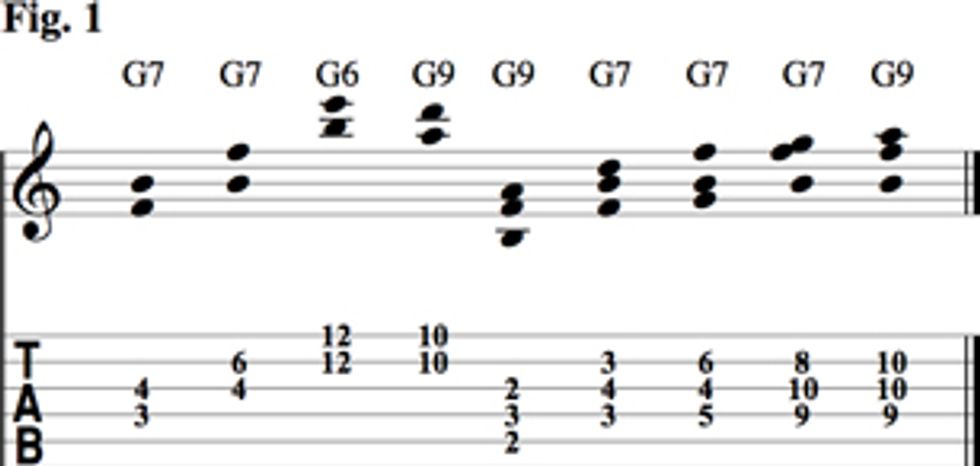
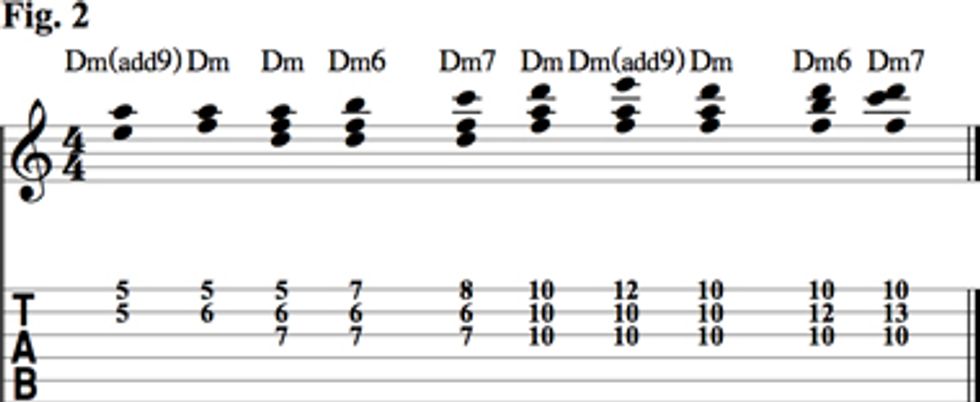
On the rhythm side of things, the 16thnote subdivision is king. I suppose you don’t get the nickname “chank” without being able to scratch out some funky 16th-note rhythms. To strum 16th-note grooves, you use the same “down-up-down-up” patterns as eighth-note strumming, just twice as fast. But remember you’re counting “one-e-and-ah” and the downstrokes fall on the “one” and the “and” while the upstrokes are on the “e” and the “ah.”
Fig. 3 shows some common rhythms (for chords or single-note lines) that emphasize the downstrokes, or the “one” and the “and” of the beat. These are based out of a dominant sound and can work over any flavor of G7. We use a basic minor voicing for the rhythms in Fig. 4. These are a bit more syncopated and focus on more upstroke rhythms.


As always, start at a slow tempo so you can think through all the “down-up” motions and count “one-e-and-ah” at the same time. If the “e” and the “ah” are hard to keep track of, “doc-tor-pep-per” works well too ... seriously, it does. Sliding into a chord voicing is another piece of the funk guitar pie and Fig. 5 shows a couple of possibilities à la “Catfish” Collins.

Once you’ve got a handle on the characteristic voicings and rhythms, give the next two examples a try. I employed a catch-all, schizophrenic method that incorporates most of the voicings and rhythms, adding single-note pentatonic lines in places. Funk guitar parts are not necessarily this busy. (In fact, I would definitely get thrown off the bus for playing stuff like this.)
Fig. 6 starts with a two-measure D minor pentatonic line and goes into another twomeasure phrase that uses the Dm-Dm6- Dm7 combination with a little pentatonic action thrown in for good measure.
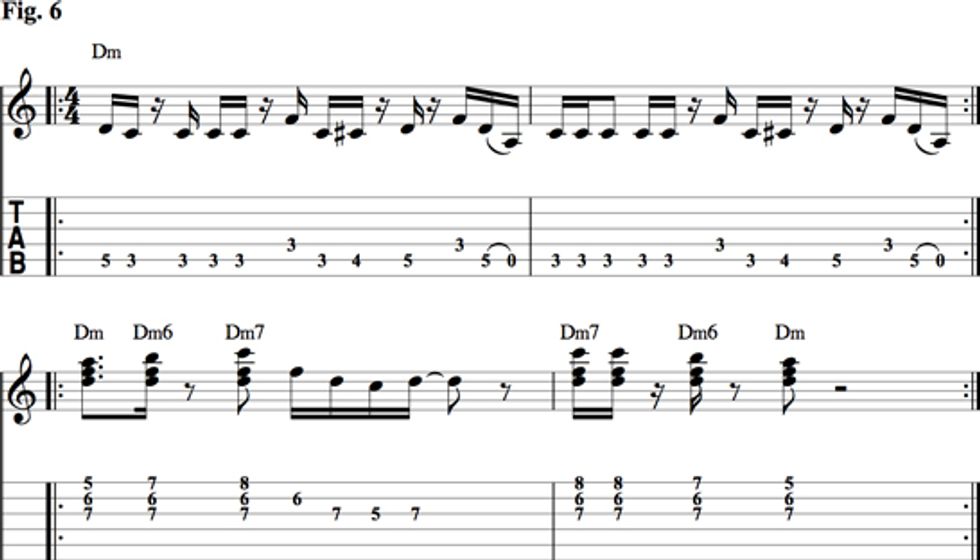
Fig. 7 is a little longer. It starts with some G7 combinations involving two- and threenote voicings and a slide. A two-measure “break” follows, with C7 and a D minor pentatonic line. It ends with another twomeasure phrase that uses almost all of the Dm chord combinations and some more slides. Make sure to check out other players like Eddie Hazel (Funkadelic), Prince, Ernie Isley (Isley Brothers), Hiram Bullock, Nile Rodgers (Chic), Tony Maiden (Rufus), Freddie Stone (Sly and the Family Stone), and Al McKay (Earth, Wind & Fire) and see how they put the pieces together.
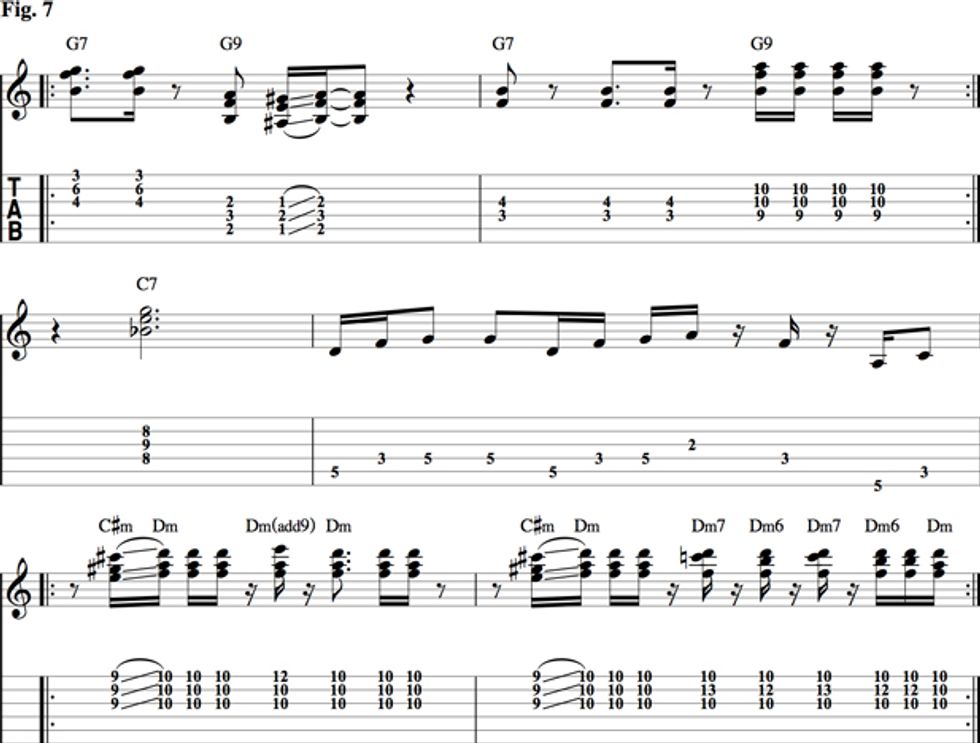
Now, get down on it!
 Pete Weise has a B.M. and M.M. in Jazz Studies from the University of North Texas, is an Associate Professor of Jazz Guitar at Collin College, faculty of the National Guitar Workshop, and teaches privately at the Guitar Sanctuary and the Fine Arts Academy at FBC Keller. He leads his own jazz fusion quartet and is a freelance guitarist in Denton/Dallas, Texas. Visit peteweise.com for more information.
Pete Weise has a B.M. and M.M. in Jazz Studies from the University of North Texas, is an Associate Professor of Jazz Guitar at Collin College, faculty of the National Guitar Workshop, and teaches privately at the Guitar Sanctuary and the Fine Arts Academy at FBC Keller. He leads his own jazz fusion quartet and is a freelance guitarist in Denton/Dallas, Texas. Visit peteweise.com for more information.















